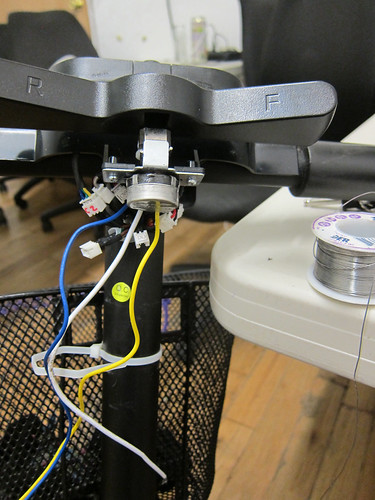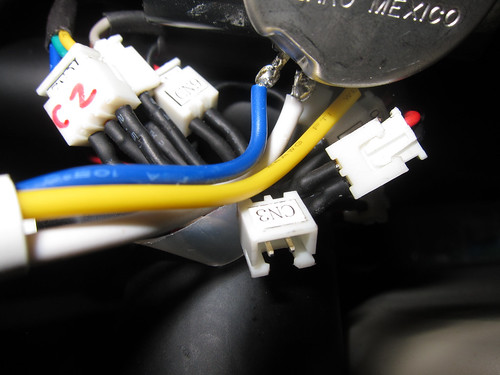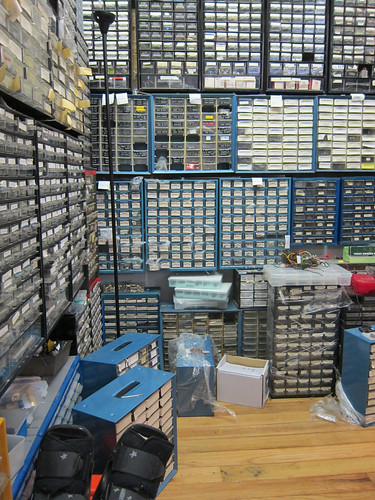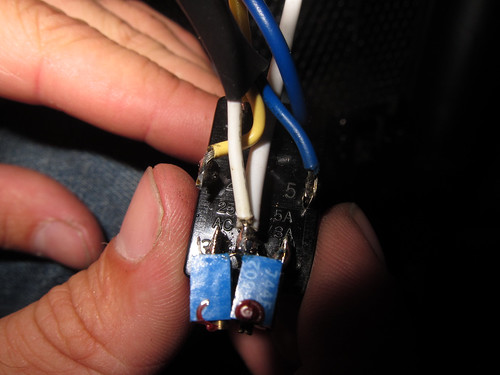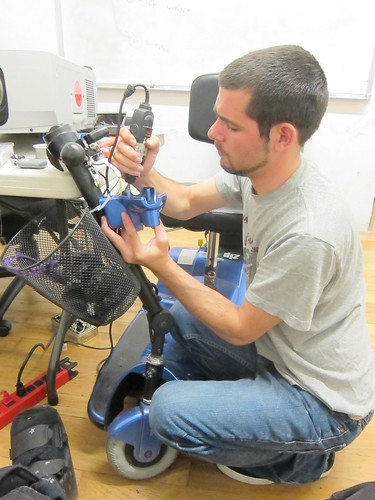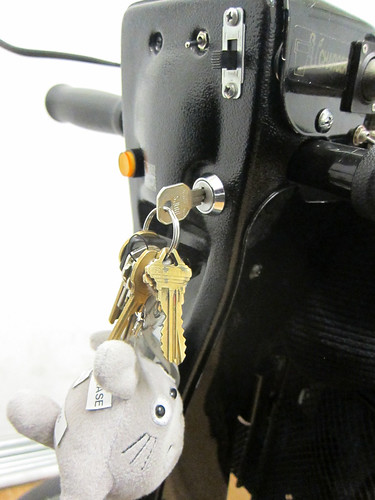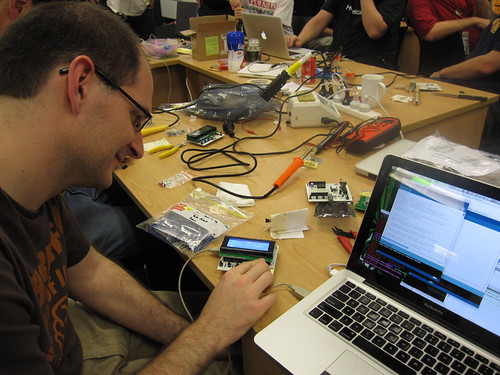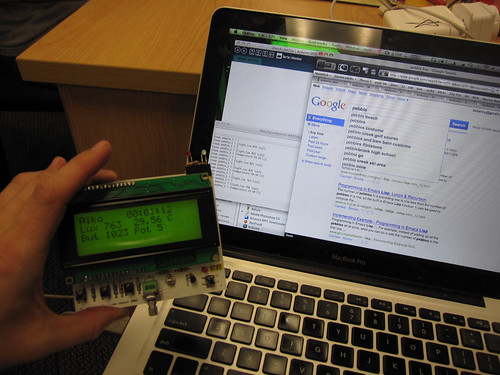Hackerhive and the laser cutter
Our Feminist Hackers meetups continue!
Last night a bunch of us met at Noisebridge for a lively, chaotic evening clustered around the laser cutter and breathing its toxic fumes. There were around 10 of us coming in and out of the meeting.
Susan and I worked on fixing up some insulation on the bottom of the door on the Turing classroom earlier in the day so that it will be more soundproof.
We gossiped about SHA-3 and Keccak and looked at the code for Keccak. It is over my head, but was interesting.
We did some stuff on the laser cutter. A bunch of us used it for the first time, and it wasn’t that hard but has some quirks of the software and setting up the machine to cut. I think after I left, Susan and others fixed the exhaust fan on the cutter, till very late into the night. Hurrah!!
We made a draft version of Amy’s sign for the library aka the biblioteca, and I made stencils for R.A.M.P., (Radical Access Motherfucking Project) Zach (who was orbiting our hive a little bit) made a stencil too that had to do with vegan politics.
I learned how to do “ghost” and “enforce” for my registered nick on IRC. I can’t believe I didn’t know that before! Over 20 years on irc! Well. This explains why sometimes I have lizzard_ annoyingly instead of just plain lizzard in irc.
Jordan, Susan, and CC found new giant fluorescent tube bulbs for the overhead lighting fixture at some point, turned off the power at the electrical box, and got the lights working.
Jordan, CC, and Susan got the HP DesignJet 650C plotter working. It is enormous and can print onto giant map-sized pieces of paper. They printed a photo and then some periodic tables in color. I had to leave before they figured out how to make it print really huge. We need to remember to document how to use it!
Kim gave us these awesome seed-embryo-thing stickers which she puts in places all over and which have several layers of meaning to do with growing and development and creativity. The embryo-thing (as she described it) is at the Fish stage before it has gender or species. A general cheer went up at this idea as we carefully transferred the stickers to our laptops.
Someone else in the space told Lydia to come find us. “I’ve been a feminist hacker for forever, before I even knew there was a such a thing as feminist hackers, which was like, 5 minutes ago!” She asked if it is okay to bring her kid to our meetups. Yes it is as long as you don’t mind them hanging out with us amid the junk heaps and fumes.
I love getting to know people at these casual meetups! I think part of our benefit is that we build trust amongst ourselves and we make a good space for people to step up and try things, or simply to speak up and be heard or put forth their ideas. In short we listen to each other and pay attention. It feels like a nice dynamic and I feel more at home in the space than ever before. We are taking these few hours to focus on each other and ourselves and not pay attention to guys; a minor tweak to behavior that has an awesome beneficial effect. (You would be amazed, maybe, at how hard it is to put into practice.) I hope that other hackerspaces will have woman-centered or feminist meetings, hackdays, or groups and that they’ll be in touch with us.

